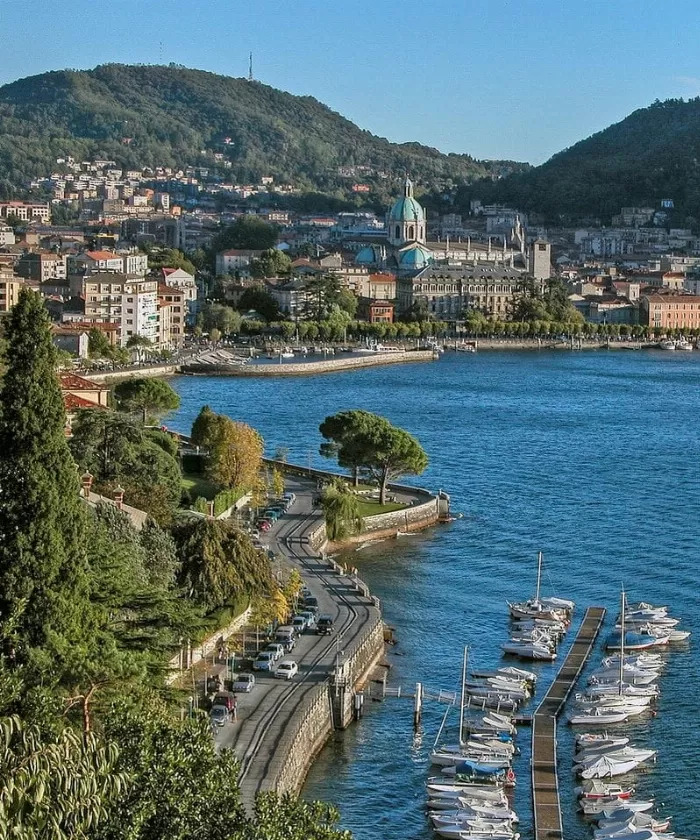
Weather in Italy in August: Essential Guide to Monthly Climate and Attire
Key Takeaways
- The weather in Italy in August is what is expected from a Mediterranean country, so preparation for high temperatures is key.
- August is typically the hottest month in Italy, with northern regions being milder and southern areas experiencing high heat.
- The country sees a surge in local and international holidaymakers, which affects the crowd levels at tourist destinations.
- Planning for the heat and adjusting itineraries to regional weather conditions can improve the travel experience.
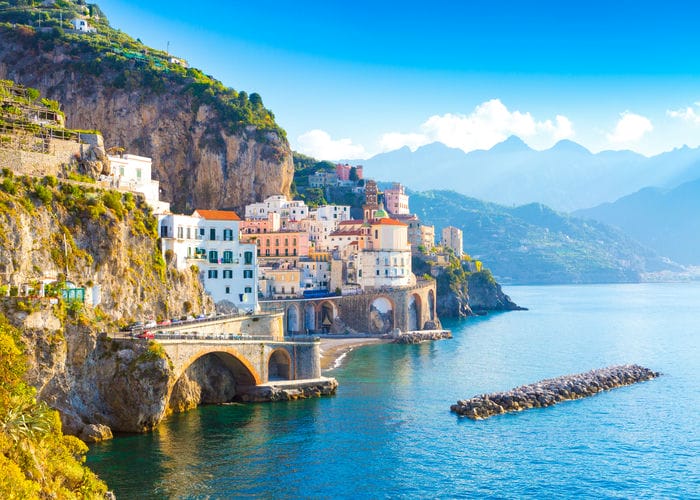
Travelers planning to visit Italy in August should prepare for summertime conditions that can greatly influence their experience.
Italy's climate varies considerably from north to south, with regional temperatures in August typically ranging from warm to very hot.
Northern areas may have more moderate weather, while southern regions, including major cities like Rome and coastal areas, often experience high heat and humidity.
This is Italy's peak summer vacation period, with many locals and tourists alike flocking to popular spots.
During this month, visitors can expect daytime temperatures to be quite warm, often climbing into the 30°C (86°F) range, particularly in southern and central parts of the country.
The evenings offer a slight respite but can still remain warm.
With August being a popular time for Italians to take their holidays, many urban areas may be less crowded, whereas tourist locations, especially beaches and historical sites, could be very busy.
Adjusting travel plans and itineraries to fit the weather patterns can enhance the overall experience, allowing tourists to explore Italy, and enjoy the vibrant festivals, events, and outdoor dining that Italy offers in summer.
Understanding Italy's Climate Zones

Italy's diverse climate results from its long, boot-shaped peninsula stretching into the Mediterranean Sea, encompassing various geographic and climatic conditions.
Broadly speaking, Italy can be divided into three climate zones: the north, central, and south, including the islands.
Northern Italy features a continental climate, with relatively cold winters and hot, humid summers.
The Alps and other mountain ranges influence the weather patterns, leading to colder temperatures and higher precipitation in these areas.
Temperature ranges typically lie between 18°C and 30°C (65-85°F) in August.
As one travels down to Central Italy, a Mediterranean climate becomes prevalent. Summers are characteristically hot and dry.
Especially in August, tourists can expect temperature ranges from 21°C to 32°C (70-90°F), with cities like Rome and Florence representing this zone.
The heat during this month comes with high humidity, which may affect travel plans, requiring travelers to prepare for the warm conditions.
This can enhance the experience of Italy's rich cultural landscape, making it optimal for sightseeing and exploration.
Southern Italy and the larger islands, such as Sicily and Sardinia, enjoy a typical southern Mediterranean climate, with hot summers being a defining feature.
The average temperature here in August can soar between 26°C and 32°C (80-90°F). The southern regions are often the hottest, with low rainfall and more intense temperatures due to the African winds.
Comprehending these climate zones is crucial for anyone considering when to travel, as they not only affect the weather but also the regional experiences available.
During August, for example, Italians traditionally take their vacations to escape the heat, which means tourists might find some businesses closed but can also partake in the vibrant local festivities.
Each zone showcases its natural beauty and unique climate, which is a fundamental aspect of what makes Italy a charming destination throughout the year.
Historical Weather Patterns in August

August in Italy is characterized by its peak summer temperatures and a general pattern of sunny skies. Across the various regions, temperature experiences can widely differ due to Italy's diverse geography.
In the northern regions, temperatures during August typically range from moderate to high.
The climate is relatively mild in Alpine areas like Maso Corto, where daytime temperatures average around 15°C (59°F), cooling down to about 5°C (41°F) at night.
Conversely, cities in the Po Valley like Milan may see temperatures ranging from 18°C (65°F) to 30°C (86°F).
Moving towards the central part of Italy, one may observe a slight uptick in both daytime and nighttime temperatures.
Historical data suggests an average range between 21°C (70°F) and 32°C (90°F), with cities like Rome often experiencing very warm nights and dry conditions ideal for outdoor dining and evening walks.
Southern Italy, including the regions of Apulia and Calabria, and the island of Sicily, tend to be the warmest.
Foggia, for instance, may see daytime highs soaring to 34°C (93°F), with nights cooling down to around 21°C (70°F).
The southern coastal areas also undergo high humidity levels, reinforcing the heat experienced during the day.
Available climate data for Italy reinforces these distinctions, offering a more comprehensive view by presenting average temperatures in tables of northern, central, and southern regions.
Although summer weather can be quite hot, the country's topography leads to varying local climates.
From cool Alpine breezes to the hot, dry winds of the Mezzogiorno, Italy in August offers a gamut of weather experiences.
While this period may be Italy's hottest month, it is also one of the best times for vacationers to enjoy the country’s sandy beaches, and outdoor activities.
Regional Weather Variations in August
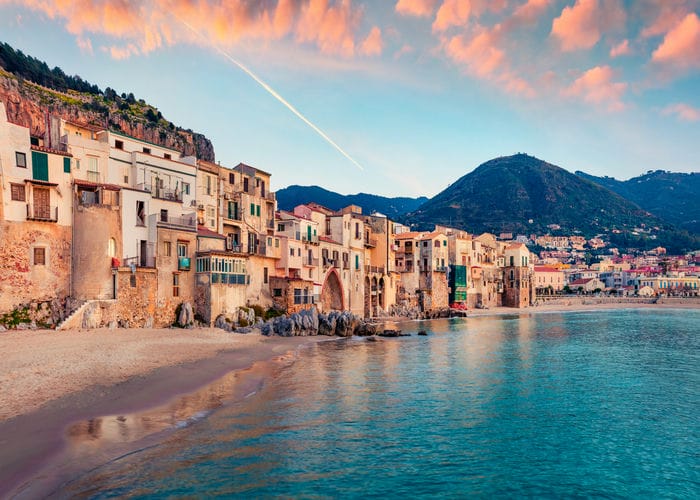
In August, Italy experiences a peak in summer weather, with each region showing distinct characteristics.
Tourists can expect warm temperatures suited for beach activities, al fresco dining, and sightseeing amid variation across northern, central, and southern parts of the country.
Northern Italy in August
In Northern Italy, locations such as Milan and the lake regions often display a diverse climate range.
Venice experiences high temperatures averaging 28°C (82°F), making it a prime location for enjoying the Grand Canal.
Further north, in the Dolomites and the mountain villages of the Italian Alps, cooler weather prevails, ideal for those seeking refuge from the heat.
Around Lake Maggiore and Lake Garda, temperatures can reach 27-29°C (81-85°F), creating perfect conditions for water sports and relaxation by the Italian lakes.
For insights into Italian attractions when you visit Italy, consider our guide to the best things to see and do in Italy.
Central Italy in August
Moving to Central Italy, destinations like Rome and Florence see average temperatures ranging from 21°C (70°F) at night to 32°C (90°F) during the day.
This warm weather encourages tourists to explore the historic streets of Rome or the Renaissance beauty of Florence with comfort.
Tuscany and Siena, with its famous Piazza del Campo and Palio di Siena, also fall under this umbrella, promising warm, sunny days perfect for witnessing the rolling hills and vineyards of the region.
Southern Italy and the Islands in August
In Southern Italy, including the Amalfi Coast, Sicily, and Sardinia, the climate is typically the warmest, with daytime temperatures hovering around 26-32°C (80-90°F).
This weather facilitates a visit to the stunning beaches and coastal towns like Amalfi, where the Mediterranean sun complements the picturesque landscapes.
The islands are renowned for their high temperatures and extended sunshine, drawing beachgoers and nature lovers alike.
Heat Waves and Unusual Weather Events
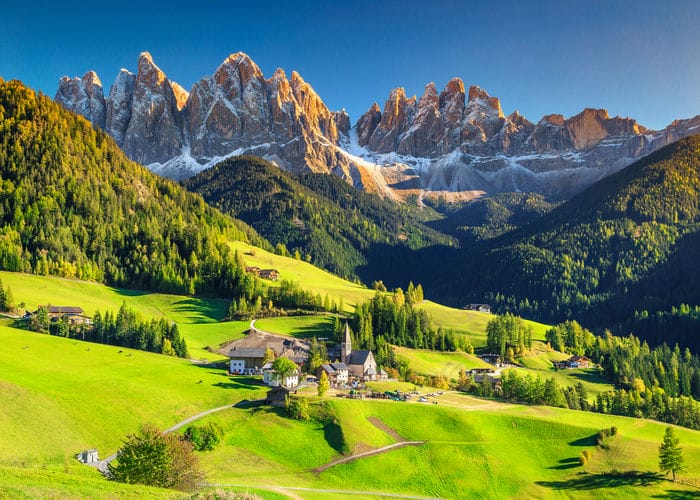
August's climate in Italy is characterized by its torrid heat waves and increasing instances of unusual weather events.
Particularly, the month ushers in soaring temperatures that routinely exceed 30°C (86°F). In recent years, heat intensities have risen, with particular regions experiencing unprecedented highs.
An example is Siracusa in Sicily, where a historic temperature of 48.8°C was recorded.
During peak heat periods, the Italian Health Ministry frequently issues "red" alerts in several cities.
A "red" alert underscores the importance of caution for all individuals—not just the vulnerable—advising to remain indoors during the hottest hours, usually between 10 am and 5 pm, to avoid the severe heat.
Preparation and Adaptation
- Alert System: Municipalities adopt a tiered alert system, warning residents of the expected heat levels.
- Public Awareness: Campaigns are conducted to prepare and inform locals and tourists about the risks and preventative measures.
Impact on Tourism
When visiting Italy in August, travel plans can be affected by such weather patterns, with advisories suggesting tourists alter their sightseeing schedules or dress in lightweight, breathable clothing to combat the heat.
Tourism guidance cautions visitors, especially when considering the busy, popular sites, often devoid of shade.
Historical Context
Notably, past data reveals that Italy has faced increasing frequencies of extreme weather events.
For instance, in 2023, an average of 11 significant weather episodes occurred daily during the initial seven months, showcasing a rising trend in climate-related challenges.
Advisories for the Future
Looking ahead, visitors are advised to stay vigilant of continuous updates from local weather stations and adapt their itineraries accordingly.
Lightweight fabrics and ample hydration are crucial for anyone braving the Italian summer sun.
For those planning a journey to Italy in the preceding summer months, it would be beneficial to understand the climatic pattern changes by consulting resources like our guide to the weather in Italy in June, which provides valuable insights into temperature variations and regional weather expectations.
What to Pack for Italy in August

August in Italy is characterized by high temperatures, often soaring above 30 degrees Celsius (86 degrees Fahrenheit).
When packing for your dream trip though, it's vital to prioritize comfort without compromising on style, as Italians value fashion.
Essential Clothing Items:
- Lightweight and breathable fabrics such as linen and cotton to stay cool
- Loose-fitting summer clothes including shorts, t-shirts, and sundresses in light colors to reflect the sun's rays
Protective Gear:
- Sunscreen with high SPF to protect against the intense Mediterranean sun
- A wide-brimmed hat and UV-protection sunglasses for additional sun safety
Footwear:
- Comfortable walking shoes for exploring cities
- Sandals for the beach and relaxed environments
For those planning a beach vacation in Italy, swimwear is a must. Italian beaches, from the pebbled shores of the Amalfi Coast to the beautiful beaches with white sands of Sardinia, call for chic and practical swim attire.
Additional Tips:
- A light jacket or shawl for cooler evenings
- Water bottle to stay hydrated in the summer heat
Remember to pack respectful attire for visiting religious sites. Cover shoulders and knees to adhere to local customs.
Also, bringing a small backpack or tote can be handy for day trips.
Pack efficiently for the climate, but remember, Italians appreciate well-dressed individuals – striking a balance between comfort, protection, and elegance is key.
Festivals and Events in August
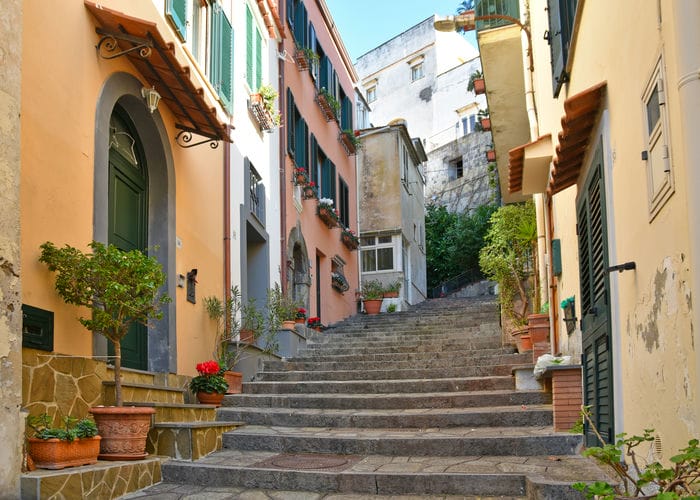
Italy comes alive with various festivals and events throughout August.
Ferragosto, celebrated on the 15th of August, is a public holiday and one of the most significant Italian summer celebrations.
This day marks the Assumption of the Virgin Mary and is associated with nationwide festivities, including concerts, fireworks, and family gatherings.
In addition to Ferragosto, travelers can enjoy a range of local festivals with unique characteristics:
- La Quintana: Held in Ascoli Piceno, this historic jousting tournament takes place on the first Sunday in August and showcases medieval traditions in the heart of the Le Marche region.
- Spectators can witness the pageantry and competition that have been re-established since the 1950s.
- Beach Festivals: With the country's extensive coastline, numerous beach festivals offer sun, sand, and intense summer vibes. Visitors can participate in beach sports, music, and cultural activities.
August is also a popular month for outdoor dining in Italy. Travelers can join locals to enjoy an evening aperitivo or dine al fresco in a piazza, taking pleasure in the balmy weather and Italian culinary delights.
Visitors planning to travel in August should note the high popularity of these events and consider booking accommodations in advance.
Tips for Visiting Italy During August
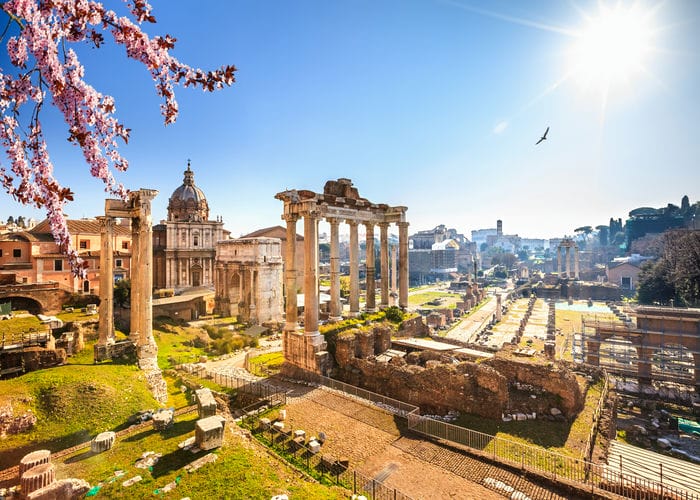
August in Italy is synonymous with high temperatures, bustling crowds, delicious food, and a vibrant atmosphere.
Travelers should prepare for a warm climate, particularly in the southern regions and coastal areas like the Amalfi Coast, where temperatures can soar above 80°F (26°C).
- Crowds: August is peak tourist season, so expect large crowds at popular destinations. Visitors may encounter long queues at attractions and crowded beaches. To mitigate this, they should start their days early and consider booking tickets to major sights in advance to skip lines.
- Beaches: The alluring beaches along the Amalfi Coast and other parts of Italy draw numerous visitors. To secure a spot on the sand, one should arrive early in the morning or visit less popular beaches. Carrying sunscreen and staying hydrated is crucial due to the intense sun.
- Restaurants: Seafood and fresh regional dishes are abundant in August and early September. Reservations at restaurants are highly recommended, as they can fill up quickly. For more detailed information on the cost of dining and accommodation, one can look into the cost of vacation in Italy guide.
- To potentially save on dining costs, dining in restaurants that locals rather than tourists frequent is advised.
- Hydration and Sun Protection: Visitors are advised to drink plenty of water and use sun protection. Outdoor activities should be planned during cooler parts of the day, like morning or evening.
- Towns: Exploring local towns and villages can be more enjoyable early in the morning or later in the afternoon when temperatures are cooler. This planning can enhance one's experience of the architecture, history, and ambiance without the discomfort of midday heat.
- Amalfi: For those planning to visit the Amalfi Coast, be aware of traffic congestion along the coast road, especially during August. Travelers might consider using ferries or public transport to avoid the stress of driving and parking.
By considering these tips, travelers to Italy in August can enjoy their beach holiday with a fulfilling and more comfortable experience.
Final Thoughts

As we conclude our essential guide to the sunny weather in Italy during the month of August, we reflect on the key takeaways that will help travelers prepare for their journey.
August in Italy brings with it the quintessential summer experience—hot and sunny days that are perfect for exploring the rich cultural tapestry of this beautiful country.
From the relatively milder northern regions to the scorching south, visitors should plan for a range of temperatures and conditions, packing accordingly with lightweight clothing, sun protection, and plenty of water to stay hydrated.
Amidst the heat, Italy in August is alive with activity. The country's peak vacation period means bustling tourist hotspots, particularly in coastal areas and major cities like Rome.
There, the heat can be intense but the historical and cultural offerings, like the Colosseum and the Vatican Museums, are too enticing to miss.
Adjusting travel itineraries to include early morning or late evening excursions in your August trip can make for a more enjoyable experience, allowing one to partake in all the locals' many festivals and events that take place during this festive time of year.
For those who venture to Italy for beach time during this peak season, embracing the Italian summer means immersing oneself in the local lifestyle.
It means enjoying leisurely outdoor meals, participating in traditional celebrations like the national holiday of Ferragosto, and finding respite in Italy's beaches or cooler mountain regions.
With careful planning and a willingness to adapt to regional weather variations, travelers can ensure their Italian summer adventure is both memorable and comfortable.
Whether it's lounging by the Mediterranean Sea, admiring Renaissance art, or savoring gelato on a piazza, Italy in August is a destination that truly offers something for every traveler.





